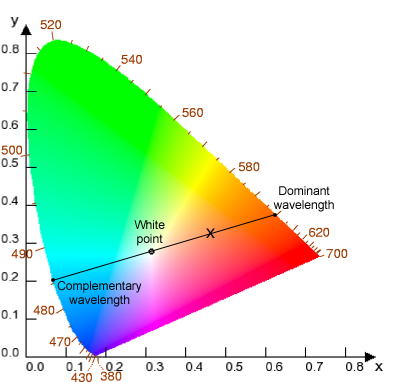
The "x" marks the color in question. For the white point indicated, the dominant wavelength for "x" is on the nearer perimeter, around 600 nm, while the complementary wavelength is opposite, around 485 nm. Intuitively, the dominant wavelength of "x" corresponds to the primary hue of "x".
In color science, the dominant wavelength is a method of characterizing a color's hue. Along with purity, it makes up one half of the Helmholtz coordinates. A color's dominant wavelength is the wavelength of monochromatic spectral light that evokes an identical perception of hue.[1]
- ^ Schanda, Janos (2007). Colorimetry : understanding the CIE system. [Vienna, Austria]: CIE/Commission internationale de l'eclairage. pp. 65–66. ISBN 978-0-470-04904-4.
© MMXXIII Rich X Search. We shall prevail. All rights reserved. Rich X Search
